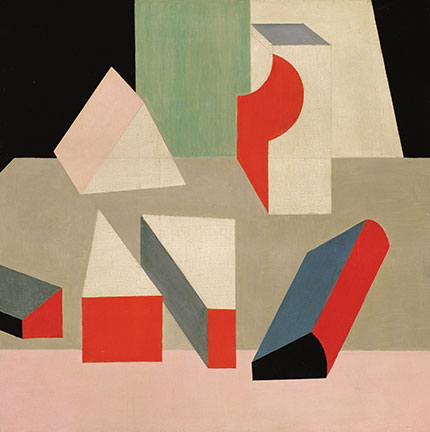Reviews of Modern Physics at 90
DOI: 10.1063/PT.3.4132
In 1597 the English philosopher Francis Bacon wrote, “ipsa scientia potestas est (knowledge itself is power).” Today we are inundated with knowledge and information. There exist nearly a billion websites, more than a million articles on the arXiv eprint server, and now, more than 100 physics journals. What makes one site stand out over another? Is it one particular posted article? Is it one particular journal? The quality of its content? Its breadth of use and appeal?

PEINTURE/NATURE MORTE, 1928 (OIL AND PENCIL ON CANVAS), PATRICK HENRY BRUCE (1881–1936)/PRIVATE COLLECTION/BRIDGEMAN IMAGES

Over its 90-year history, Reviews of Modern Physics (RMP) has served the whole physics community. The journal has reported on current trends through colloquia and reprinted prize lectures (Nobel and now the American Physical Society’s Medal for Exceptional Achievement in Research). It has published values of fundamental constants and particle data, reviewed mature topics, and, perhaps uniquely among the journals of the American Physical Society (APS), it, has offered refereed, pedagogical lectures.
What drives RMP? In a word, impact. It’s not a metric that can easily be used by tenure committees or review panels. Rather, the impact that RMP strives to make is to unify ideas across physics, to introduce readers to new paradigms, and to publish foundational, essential articles that are read over and over again. If a colleague years ago had to stand over a photocopier to obtain a personal version of an RMP paper, it is likely they still have it. If that colleague is like me and my graduate school classmates, the much-loved copy is well worn, extensively annotated, and dotted with coffee and food stains.
For this special issue of Physics Today, RMP’s current editors, former editors, authors, and others have taken a look back at how their respective fields have appeared in the journal. In addition, some of the topics will be further highlighted at the March and April 2019 meetings of APS during RMP-sponsored sessions. If you’re attending either meeting, please join us!
What will the next 90 years bring? I would be foolish to predict, but I know something about the next 10: RMP will continue to follow the expansion of physics and the physics community. We now have an associate editor to encourage and solicit reviews on climate science, we have introduced biophysics and soft matter as independent efforts, and, notably, we are the only one of the APS and American Institute of Physics families of journals that has a devoted editor for astronomy and astrophysics. When our 100th anniversary comes along, take a look!
1. The history of Reviews of Modern Physics 2. The origin of the elements 3. From simple liquids to colloids and soft matter 4. Beams and plasmas 5. Theory of dynamic critical phenomena 6. Progress in superconductivity 7. Tying it all together 8. Coherent light brighten the quantum science frontier 9. Quantum foundations 10. Constructing the theory of the standard model 11. Experimental basis of the standard model Reviews of Modern Physics retrospective
More about the Authors
Randy Kamien is the lead editor of Reviews of Modern Physics and the Vicki and William Abrams Professor in the Natural Sciences at the University of Pennsylvania in Philadelphia.




